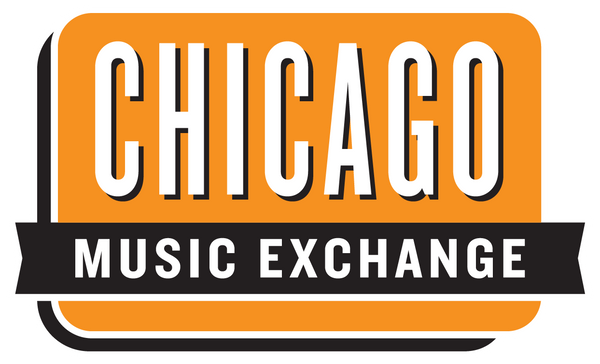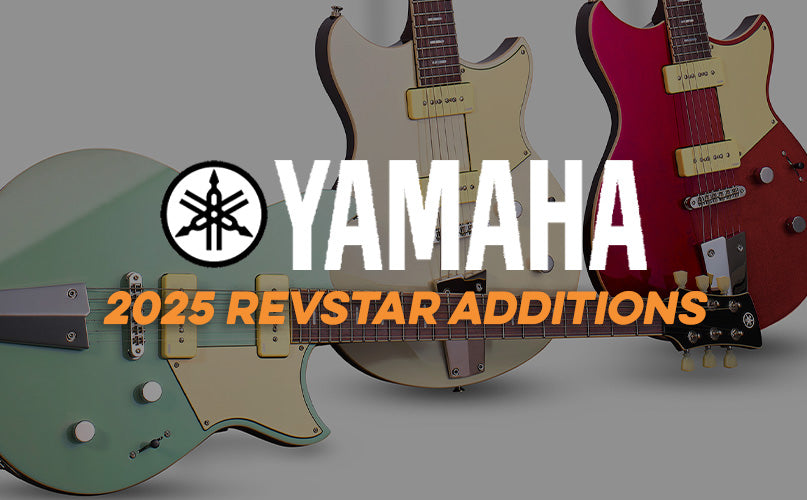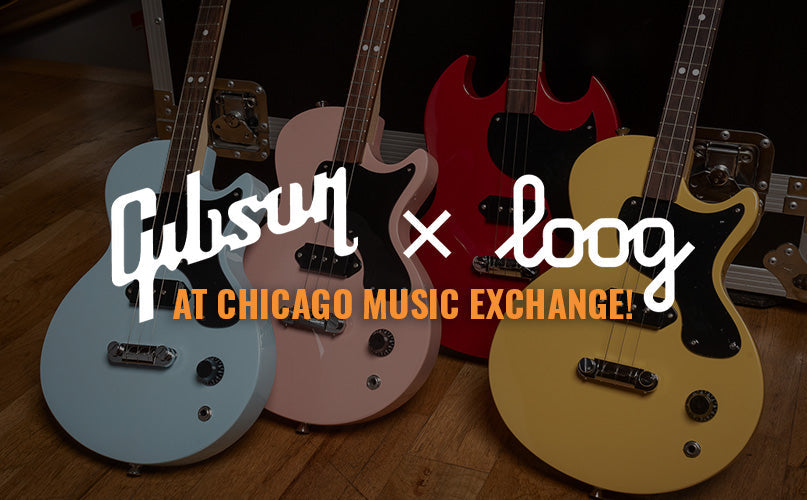INSIDE: JHS Pedals
90 years of electric guitar in a box.
When Josh Scott speaks, he speaks simply. His company, JHS, makes simple pedals, each with a simple goal: to contribute to and further the history of the electric guitar. It’s this aim that guides the design and construction of every JHS pedal, but like most other simple things a wealth of knowledge, hard work, and passion is required to make it so.
“A JHS pedal is simple...I want to keep it simple so every player can plug in and easily find the sound they like.”
But that’s what Josh does. He makes things simple, and like the best in every field Josh has no trouble putting what he knows and loves into its simplest terms. Both an academic and a professional when it comes to electric guitar, he pursues his craft with a deep understanding of its history, working with it to create personal, informed, and innovative effects engineered to pare a guitarist’s experience down to its most elemental components: sound and joy.

Q&A with Josh Scott
What is JHS?
JHS is a guitar pedal company based out of Kansas City, MO. We’re in our 11th year.
Who is JHS?
It’s made up of 25 employees with different tasks ranging from research and development to marketing, shipping, building, printing, etc. JHS is definitely a team effort, which has always been a personal goal of mine in doing business.
How did you get started building effects?
I was a session and touring guitarist and one day my the footswitch broke on my Boss Blues Driver. I fixed it and got really curious about the circuitry inside - specifically about why my Keeley-modded Blues Driver sounded different than my stock one.
When and how did JHS begin?
JHS began out of that Boss pedal repair. I went down the rabbit hole of learning to read schematics and how classic circuits like Fuzz Faces, Tube Screamers, and Rats worked. I started doing my own modifications to different pedals and sold those in a local store. I never intended to have a pedal company, it was simply me messing around as a hobby/side income doing some mods here and there. But it quickly developed into more.



What inspired you to begin and what inspires you to continue?
I was inspired to begin because I loved gaining the knowledge and ability to make pedals that I wanted to play. I liked tweaking them the way my ears wanted things to happen. I wanted to create a circuit that was specifically geared toward my style of playing and what I wanted to get out of my guitar rig. That is still a big part of what motivates me to continue, but now other factors do too. I like discovering new things, bringing exciting new products to the market, being an educator about the history of pedals, showing people all the great things that have existed, doing my personal takes on some of those circuits, and just having fun.
How would you describe a JHS effect to someone new to the brand?
A JHS pedal is simple. My goal has always been for a player to plug into one of my pedals and find a good sound. I sometimes will offer a lot of features, options, or digital capabilities but my goal is to not go over the top. I want to keep it simple so every player can plug in and easily find the sound they like.
How is a JHS effect constructed from start to finish?
The first element is the design. I head up an R&D department in the shop here in Kansas City, which includes 4 other people. A circuit design will start with an idea that I have and one of us will start to execute it. Most of our designs are a collaborative effort. Once we have perfected the design on a breadboard, we prototype it and get into manufacturing. As far as manufacturing, everything is completely built here in Kansas City, with the exception of our circuit boards. Those come from one of three locations in the United States - Michigan, here in Kansas City, or Los Angeles. So from start to finish, we build and have oversight into every element of the brand and pedal.
What components, designs, techniques etc. make JHS effects unique?
I think our main thing is our branding. When I started, I wanted to have bright, fun colors and I wanted to make the pedals have a certain feeling. I accidentally achieved that by using stamp icons early on. Our brand has evolved from that stamp icon to a printed icon enclosure. You see a pedal in a plain enclosure, a very symbolic icon, and a simple name. If they are all sitting together, they have a very similar feel. They’re bright, fun, easy to understand, and somewhat unique in the market.
How long does it take to make a JHS effect from start to finish?
We build all of our effects here in Kansas City in an assembly line fashion, so every pedal you get has been “built” by 3-5 people, depending on the process of the specific pedal. But a pedal probably takes 20 minutes to build in assembly line fashion so this does not include testing, packaging, shipping and all the other things that get those parts and pedals into the customers hands.
What inspires your creative process?
I typically get ideas for pedals by visualizing what the pedal will look like. I often do it backwards to most of my friends or other people in the industry, from what I’m told. I will have a name idea or an image/icon idea and will then begin to think about how a guitar player could see a name, image, or color and visualize the sound through that. From there, I create a sound from the look. The other main way I work is in wanting to replicate a piece of history. If I take that approach, I will start by having a circuit first or a concept like, “I want to do this classic Fuzz. Let’s think about that Fuzz, what images, names, colors, or icon could portray it.” Then I’ll go perfect the Fuzz to put in it by working that circuit into the ground, learning it, adding to it, etc… Those are the basic ways I usually work.
What is the spirit of JHS?
Maybe it’s like an eagle. Like a squawking eagle. ;-)
I think the spirit of JHS is to help guitar players have fun playing guitar. I want all of them, young and old, to remember that gear should be supplementary to the joy of the instrument. It doesn't take the place of practicing and playing, or loving the guitar and the history of guitar. It’s just an additional thing to make it more enjoyable.
What is the mission of JHS?
The same as the spirit. We want guitarists to see the stories behind all the gear they are buying and learn the history of the electric guitar. We try to make a great product that ties in with the lineage behind us. We want our products and our vision to tie in to the almost 90 years of the electric guitar.

Where does JHS go from here?
I think we keep doing what we are doing and finding new ways to express old and new sounds. I personally am building a museum of sorts. If you watch my YouTube show every Thursday, you see it all around me. I want JHS to expand on the great things that have already been done in electric guitar but help those things reach us here in 2019.
Is there anything else you’d like for our customers to know about JHS?
We love to talk to you. Contact us through our social media and our youtube channel. Instagram, facebook, twitter and youtube are @jhspedals.
History is not always fun, but guitar is, and every JHS pedal is a history lesson, holding 90 years of compacted fun for guitar players of all experience and skill levels, even if all you might see is a simple pedal designed to sound good.
To learn a little history, or to start having more fun playing guitar, stop by our Lincoln Avenue showroom to check out our full line of JHS pedals.
SHOP JHS PEDALS
Related Posts
Yamaha Guitars | 2025 Revstar Additions
Rev up your engines—the Yamaha Revstar Standard RSS20 and RSS02T have arrived at Chicago Music Exchange, bringing performance-minded design, expanded versatility, and unmistakable style to Yamaha’s modern electric guitar lineup....
Read moreGibson x Loog Guitars at Chicago Music Exchange
Meet the Gibson x Loog Collection—where legendary tone meets beginner-friendly design. These three-string guitars are made to empower kids to start playing right away, with simplified learning, top-tier sound, and...
Read moreIntroducing | Voltage Cable Co.
Introducing Voltage Cable Co.—premium Australian-made coiled guitar cables now available at Chicago Music Exchange. Known for their iconic colorways, road-ready durability, and patented ISO-COAT® anti-corrosion technology, Voltage Cable Co. has...
Read more


